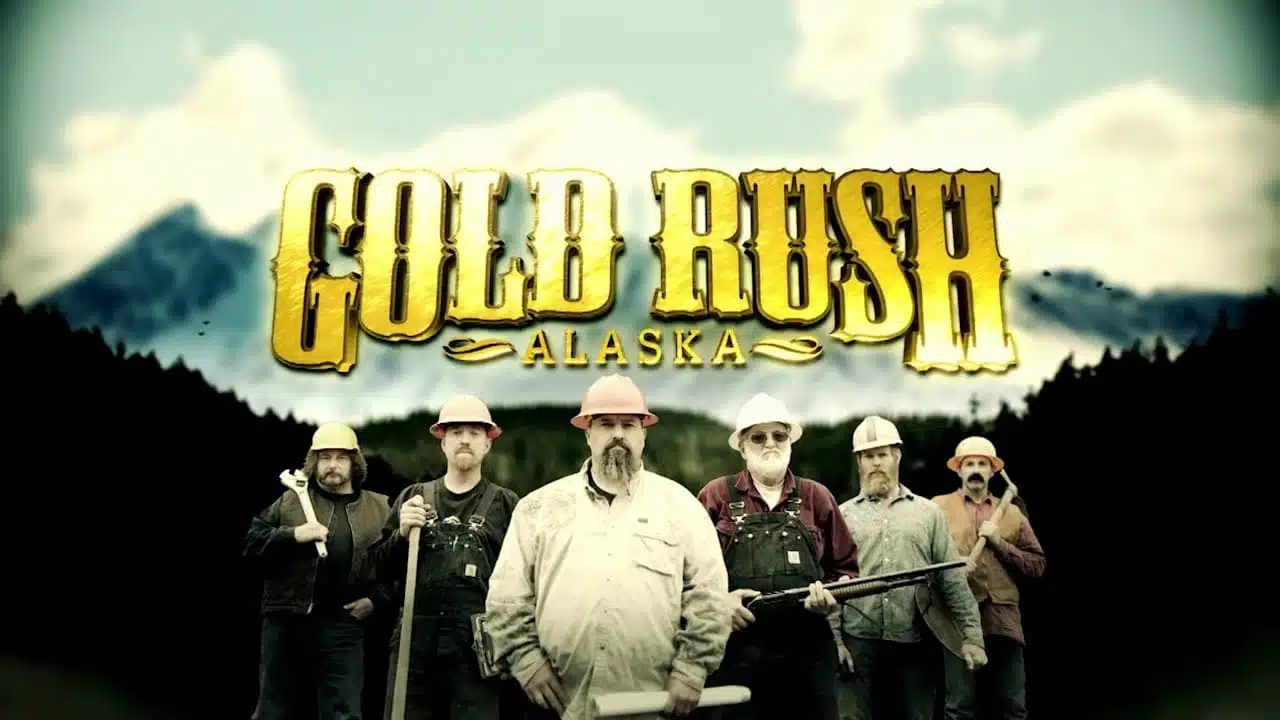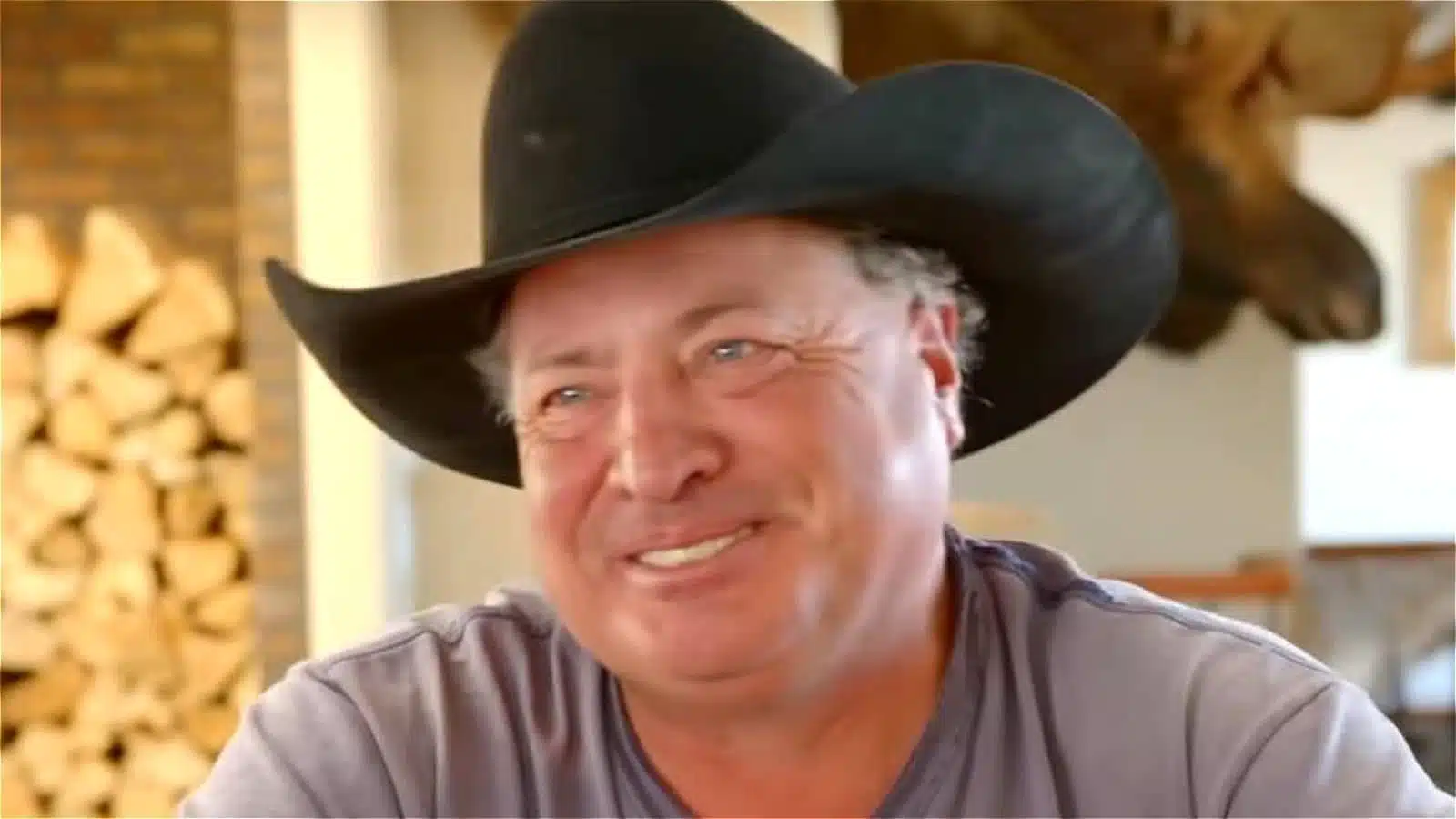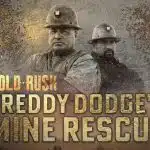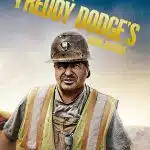Who is Fred Dodge?
Born in Colorado, 100 miles north of the Fairplay Claim, Fred Dodge has been chasing gold since just 9 years of age, along with his family. The gold miner and professional prospector, who also forms part of the team at MSI Mining Equipment, is best known for his appearances in the reality TV series “Gold Rush”, and forms a tightknit team with his brother Derek, is a gold prospector.
“Gold Rush”
Titled “Gold Rush: Alaska” during its first season, “Gold Rush” is a reality series that airs on Discovery, and follows various family-run gold mining companies which are mostly situated in Canada and Alaska, although some episodes were filmed in South America and western North America.
The season one premiere, which aired in December 2010, saw six men from Sandy, Oregon, take the gamble of their lives and travel to Alaska’s Porcupine Creek to prospect for gold, after losing their jobs. What made the show even more interesting for viewers was that the majority of cast members had little to no experience in placer gold mining, and had to learn the ropes while filming, which led to some tense but entertaining situations, and great viewing.
Some of the problems the Hoffman crew encountered included the wash plant breaking down several times, although the show’s on-site mechanic, James Harness was able to fix almost all the problems. Todd Hoffman, the leader of the group, turned to his close friend Dave Turin to help on several occasions, as Todd had years of experience working at his family’s quarry, and got the crew out of several tricky situations.
Midway through the season, the incorporation of a new cast member, the mining expert “Dakota” Fred Hurt, led to even more friction, although the most memorable episode of season one saw two of the cast members get into a physical fight. In the end, the Hoffman crew was able to mine 14.64 ozt of gold thanks to a combination of hard work and creative ideas. “Gold Rush: Alaska” also became the most-watched Friday night program in US television, amongst males aged 18-49 and 25-54.

Two new crews, the Hurt crew and the Schnabel crew, joined the show for season two, in order to keep things fresh and interesting for the audience. Thanks to better equipment, a bigger budget, and the invaluable experience learned on the job, the crews were soon able to mine more gold and make bigger profits. The Beets crew first appeared in season four, later joined by the Ness and Lewis crews in seasons 9 and 11 respectively.
Fred was used by the Hoffman crew at Porcupine Creek and Mazaruni Claim in Guyana, making cameo appearances as a professional gold digger in the first two seasons, before becoming a recurring cast member in season three. Known for his outgoing personality, viewers got to glimpse Fred’s more personal side in season five when his father-in-law died suddenly. Although he’s not one of the show’s biggest stars, Fred has a small but loyal fanbase.
Filming for season 11 was severely impacted by the COVID-19 pandemic; although the Yukon government considered miners to be essential workers, the film crews themselves didn’t fall into the same category. Due to Canada’s travel lockdown at the beginning of the filming season, the production crews were stuck in Britain, and only one filming crew member was onsite when the mining season started.
Despite these difficulties, and most of the mining crews staying home to quarantine, the eleventh season premiered in October 2020 and was well-received. This season also saw a new crew join the show. Season 12 aired in September 2021 and focused on the Schnabel, Beets, Ness, and Lewis crews; the Lewis crew mined only 110 ozt, while the Schnabel crew mined an impressive total of 8,309.75 ozt.
https://twitter.com/chhokar_happy/status/1509929526154960941
Cast Members
Being something in-between a lifestyle series and a competition series, “Gold Rush” has attracted both casual and invested viewers over the years, although devoted fans naturally have their favorite cast members. I’s important to note that although each mining crew’s gold yield is tallied at the end of the season, the show doesn’t reward the winners, although the miners occasionally make friendly wagers to see who comes out on top. As one article says, “the miners start from nothing every spring, hoping to turn a few specks of bright rock into a fortune” – which is exactly what makes “Gold Rush” a great show.
Parker Schnabel, one of the youngest cast members, is also considered to be the show’s most successful miner. Since becoming part of the official “Gold Rush” family as a teenager in season two, Parker has mined an incredible 39,910 ounces of gold worth almost $68 million, and is a staunch fan favorite after working on one of his grandfather’s old claims. Longtime viewers will also remember that he helped out the struggling Hoffman crew on several occasions in season one, when he was just 16 years old.
https://www.instagram.com/p/Cb75QQWF0ZK/
The mining prodigy was inspired by his grandfather John, who toiled as an Alaskan miner all his life. Season two saw Parker excavate the Big Nugget Creek mine on his own; although that claim only yielded 34 ounces, Parker has been the top earner of each season since season four and yielded a record-breaking 7,509 ounces in season 11, more than twice what his fellow miners yielded. Thanks to his positive outlook and camera-friendly presence, Parker has almost half a million Instagram followers, and in 2017 was given his own spin-off show, “Gold Rush: Parker’s Trail”.
Hot on his heels is Tony Beets, a wizened Dutch miner known for his foul language and long white beard. The breakout reality TV star, who joined the show in season five, is the most experienced main cast member, and isn’t one to mince his words; in fact, his longstanding feud with Rick Ness and Parker has kept viewers on the edge of their seats for years, although it remains unclear if any of the drama is scripted for entertainment purposes.
Since season five, Tony has run his crews with help from his wife Minnie and daughter Monica. Despite his decades of experience, Tony’s end-of-season yields haven’t all been good: but when they’re good, they’re brilliant. To date, Tony has mined 16,261 ounces of gold worth almost $29 million, and in season seven he boasted the show’s largest single gold clean-up in history. If it weren’t for Parker, Tony would be the show’s most successful miner, which leads viewers to think that the Dutchman is jealous of his younger competitor.
Meanwhile Todd, the leader of the Hoffman crew, has been praised for his “showman’s instincts” and the ability to make good TV. Despite most of season one being dedicated to his “inexperience and failure”, as one article put it, Todd was undeterred despite his underwhelming yield of under 15 ounces, and strove to do better in the next two seasons.
Despite a shaky start, things were looking up for Todd and his crew until a disastrous trip to the South American jungle in season four, where they mined just two ounces of gold before trying their hand (unsuccessfully) at diamond mining. The wily TV personality mined 3,032 ounces in season six – his personal best – but left the show and the mining industry altogether just two seasons later, after his failed attempts to open mines in Oregon, his home state. Viewers were sad to see him leave, but they’ll be glad to know that he ended his time in the series having mined 8,039 ounces of gold worth $14.3 million.
Rick Ness made a name for himself on the show as Parker’s longtime foreman and operator, before branching out on his own in season 9 and replacing Todd. Standing out with his striking tattoos and signature sleeveless shirts, Rick gained plenty of female fans and has been considered the show’s resident heartthrob. Sadly, the charismatic TV personality soon learned that transitioning from foreman to crew leader isn’t quite as simple as it may appear.
Crippling debts and low yields are just two of the problems Rick has had to juggle over the seasons – and his team members’ low morale caused him to bring in Fred to help fix equipment and get operations back on track. It’s safe to say that Rick’s lack of experience has also led to him taking outright reckless decisions, such as re-opening a plot of land at the beginning of winter in the last episodes of season 10. Despite these hiccups, in his first three seasons as a crew leader Rick has yielded 2,732 ounces worth almost $5 million, making for a promising start.
Fred and Dustin Hurt, nicknamed the Dakota Boys, became recurring cast members in season two when they leased Todd’s Porcupine Creek mine after the latter missed a payment. The following season saw the father-son duo travel to reach a gold-rich deposit known as the Glory Hole which Todd’s father Jack previously had his eye on. Ironically, unfavorable weather conditions and malfunctioning water pumps hindered them along the way, which came as a great relief to the Hoffman crew.
After three seasons on “Gold Rush” in which they yielded a total of 523 ounces of gold worth almost $1 million, the Dakota Boys starred in their own spin-off series named “All That Glitters”, followed by “Gold Rush: White Water”. Their personal best yield came in season four of the original series with 280 ounces. These days, Fred is semi-retired and his son is successfully carrying on the family business with help from his trusty crew members.
https://www.facebook.com/DakotaFred/photos/a.424302824257589/1708071439214048/?type=3
Last but certainly not least, Fred Dodge is officially ranked as the sixth most successful cast member on the show despite his gold yields not being tallied. It’s thanks to Fred’s expertise and tough love that the struggling Hoffman crew survived the first two seasons, and they didn’t hesitate to make him a regular crew member in season three.
In season four, Fred left the Hoffmans to work in Klondike with his brother, before returning in season five. Since then, he’s appeared on the show on-and-off and also keeps himself busy with work when not filming, although his lack of social media makes it difficult for fans to track his whereabouts. As we mentioned earlier, Fred’s help came at a crucial time for Rick and his crew when their wash plant collapsed, and he also helped out Fred Lewis in season eleven.
2021 saw Fred host a six-episode special named “Freddy Dodge’s Mine Rescue”, in which he visited underperforming gold mines across the states. and helped out crews with his invaluable knowledge. Despite the show not being renewed for a second season, there’s no doubt that viewers will see Fred in the newest season of “Gold Rush”, which will reportedly air sometime in late 2022.
The History of Gold Mining
The exact date that humans began mining gold remains unknown. Nevertheless, with some of the oldest known gold artifacts dating back to 4700 BC, evidence suggests that humans have been mining gold for at least 7000 years, although some archeologists claim that the Sakdrisi site in southern Georgia – which dates back to the 3rd or 4th millennium BC – could be the world’s oldest known gold mine.
Hydraulic mining methods such as hushing and ground sluicing were first used by the Romans to extract gold from loose sediment deposits; at the time, mining was controlled by the state, although said mines were possibly leased to civilian contractors some time later. Gold was the primary medium of exchange in the Roman empire, and also one of the reasons behind the Roman invasion of Britain which occurred in the first century AD. Gold was also mined in the Balkans, Anatolia, Egypt, Nubia, and Armenia under the Eastern Roman Empire Emperor Justinian’s rule.
During the 19th century, gold rushes around the globe such as the Victorian Gold Rush, the California Gold Rush, and the Klondike Gold Rush led to miners migrating on a large scale. The discovery of gold in the Witwatersrand also triggered the Second Boer War, and the founding of South Africa. Official estimates claim that the total world gold production since civilization began amounts to 6,352,216,000 troy ounces, or 197,576 tons.
China was the world’s largest gold producer as of 2020, having mined 368.3 tons of gold in that year. Russia came up second with 331.1 tons mined, followed by Australia with 327.8 tons. Popular mining methods include placer mining, panning, sluicing, and dredging. Despite its environmental impact, in recent years recreational gold mining has also become a popular outdoor hobby in countries including Wales, Canada, South Africa, and Australia.











Leave a Comment